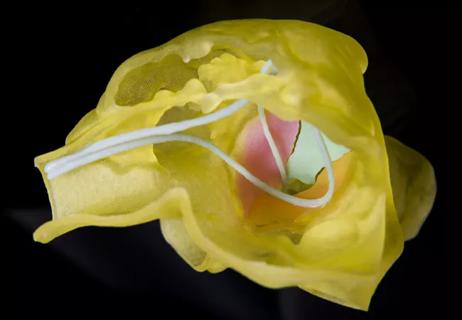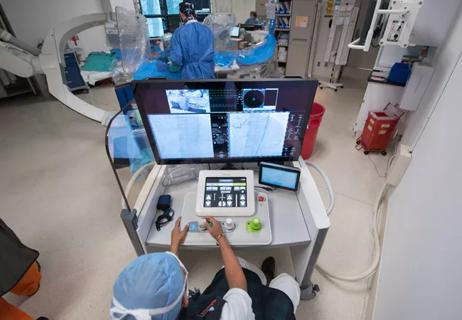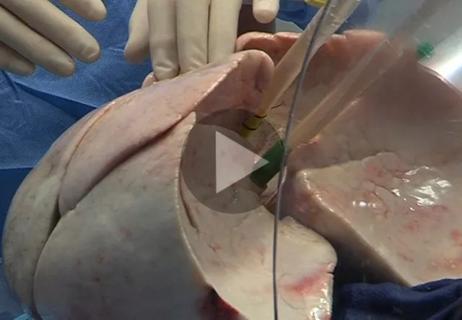Promises a low-cost way to visualize areas of stenosis
A 3D-printed model of an atherosclerotic superficial femoral artery (SFA) can be used to provide realistic-appearing ultrasound characteristics at very low cost. So concludes a recent study by Paul Bishop, MSEE, RVT, and his colleagues in Cleveland Clinic’s Department of Vascular Surgery and Department of Biomedical Engineering.
Advertisement
Cleveland Clinic is a non-profit academic medical center. Advertising on our site helps support our mission. We do not endorse non-Cleveland Clinic products or services. Policy
Using commercially available 3D printing materials and equipment, the researchers created a 3D model of an atherosclerotic SFA based on actual geometry derived from a CT scan reconstructed and segmented using semi-automated methods and commercial software. Multiple 3D print materials were selected to simulate normal artery wall tissue and atherosclerotic plaque. When the researchers evaluated the 3D-printed model with ultrasound, they demonstrated that lumen geometry of the SFA model was similar to the geometry of the actual artery. Ultrasound was able to discern between the 3D-printed materials and to visualize regions with stenosis, as shown in the sample images below.

Stenosis in a 3D-printed superficial femoral artery model (left) is matched with its corresponding appearance on ultrasound (right).
Imaging replication was not perfect, however: Ultrasound measures of echogenicity and wave velocity were noted to differ between the model and biological tissue.
“Although the 3D-printed model didn’t demonstrate fully accurate ultrasound characteristics, it provided realistic imaging on our first attempt to create an ultrasound phantom using only commercially available equipment and materials,” says Bishop, Director of Cleveland Clinic’s Vascular Core Laboratory. “Visualization of the SFA model wall was enabled much as would be the case with an in vivo SFA despite differences in ultrasound properties from actual tissue.”
While noting that further research is needed to refine 3D printing materials to better replicate biological tissue, Bishop and colleagues say their model may be useful in cost-sensitive applications in which exact ultrasound accuracy is not necessary. Indeed, they estimate their total 3D printing material cost for the model to be under $20.
Advertisement
Their study was awarded the D.E. Strandness, MD, Scientific Award for Excellence in Scientific Research from the Society for Vascular Ultrasound in 2017 and has been submitted for publication.
Contact Bishop at bishopp@ccf.org.
Advertisement
Advertisement

Patient-patient network analysis proves to be fast and clinically intuitive

How we’re using a new multidisciplinary approach to broaden the benefits of ablation

Models developed with promising accuracy and generalizability to clinical practice

Illustrated case series profiles a valuable tool for a rare and complex entity

A minimally invasive, single-incision approach to two coexisting problems

A long-overdue technology is poised to reshape practice

A short video portrait and overview of our experience to date

A glimpse into our centralized monitoring strategy and more